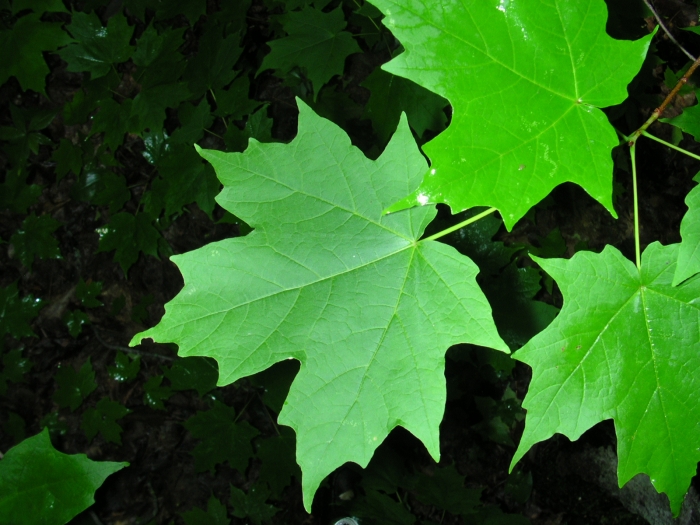Sugar Maple
(Acer saccharum)
Sugar Maple (Acer saccharum)
/
/

Superior National Forest
CC BY 2.0

















































































Estimated Native Range
Summary
The Sugar Maple is celebrated for its spectacular autumn color and is a popular choice for urban planting, parks, and large gardens. It is also valued for its sap, which is used to produce maple syrup. While it is fairly fast-growing and was once a favorite street tree, it is now known to be intolerant of urban pollution, including road salt, which can limit its use in street plantings. The tree’s shallow, fibrous roots can compete with turfgrass, making it less suitable for lawns. It thrives in full sun to part shade and requires medium amounts of water. Sugar Maples are not drought-tolerant and can suffer from leaf scorch in dry, windy conditions. They are also susceptible to pests such as the Asian longhorned beetle and diseases like verticillium wilt.CC BY-SA 4.0
Plant Description
- Plant Type: Tree
- Height: 60-100 feet
- Width: 30-60 feet
- Growth Rate: Slow
- Flower Color: N/A
- Flowering Season: Spring
- Leaf Retention: Deciduous
Growth Requirements
- Sun: Full Sun, Part Shade
- Water: Medium
- Drainage: Fast, Medium
Common Uses
Bank Stabilization, Bee Garden, Bird Garden, Butterfly Garden, Deer Resistant, Drought Tolerant, Edible*Disclaimer: Easyscape's listed plant edibility is for informational use. Always verify the safety and proper identification of any plant before consumption., Rabbit Resistant, Salt Tolerant
Natural Habitat
Hardwood forests of Southeastern Canada and the Eastern USA, preferring rich, moist, well-drained soils
Other Names
Common Names: Hard Maple, Rock Maple, Sugar Tree, Sweet Maple, Curly Maple, Birds-Eye Maple, Zucker-Ahorn, Érable Franc, Érable Franche, Érable À Sucre
Scientific Names: , Acer saccharum, Acer saccharum var. saccharum, Acer saccharophorum f. angustilobatum, Acer saccharum f. villosum, Acer subglaucum, Acer saccharophorum var. subvestitum, Acer saccharum f. subvestitum, Acer saccharum f. conicum, Acer saccharum var. glaucum
GBIF Accepted Name: Acer saccharum Marshall